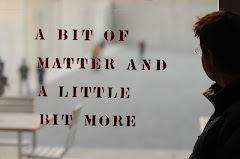
Lawrence Weiner, Vienna, 1991, Wiener Festwochen, Flakturm im Esterházypark. Photo by Christian Wachter.
Conceptual art is a visual art that is not retinal, or at least resists appealing to sight at the expense of thought. It often manifests itself in language that assumes the entire burden of compelling the viewer to read the signs on gallery walls. Conceptual art persists and is not amenable to the merchandising that subsequent decades have brought about. Whether they know it or not, formalists of the 1960s presupposed the early modern achievement of Russian and French artists and writers. Conceptual artists as well show the formal and structural bias of manipulating language operationally. Sites formerly intended for live events or “actions” now allow mental operations to substitute for physical behavior. Lawrence Weiner is among the most respected in the loose federation of artists that includes Robert Barry, Douglas Hueber and Joseph Kosuth, and extends to Sol LeWitt, who remains a key figure in artistic formalism. Weiner’s language refers to works both specific and general. In sites that are specific, yet treated categorically, Weiner’s words occupy the book, the gallery, the street, the stage. His words and work act as cultural irritants wherever they appear. Ranging from mildly to aggressively interventionist, Weiner’s verbal art uses formalism to drive a wedge into the cultural status quo.
Read Lawrence Weiner by Marjorie Welish
in Bomb Issue 54 Winter 1996, ART







